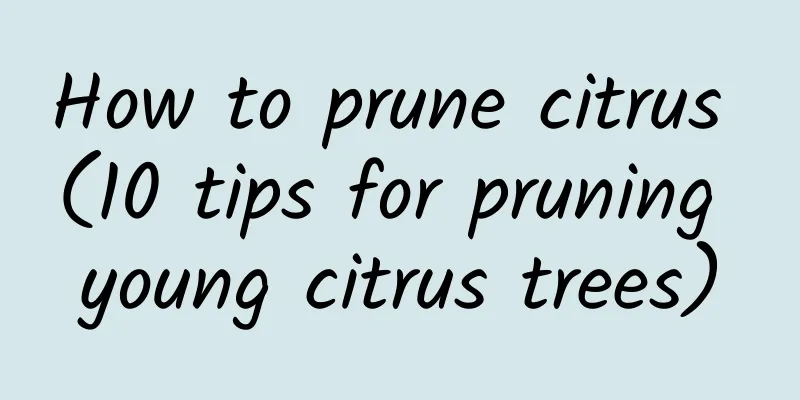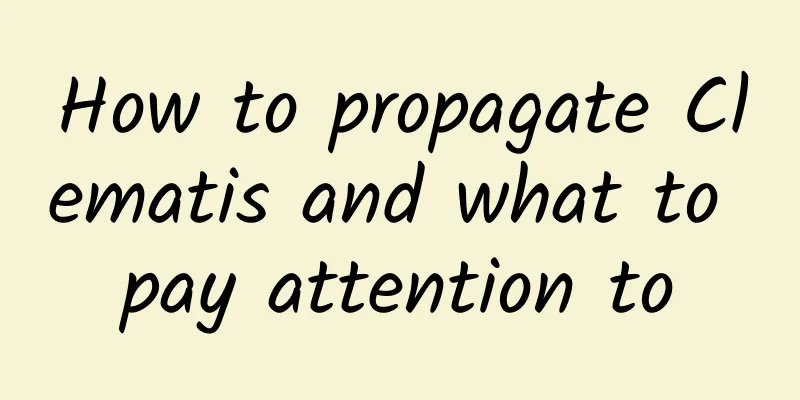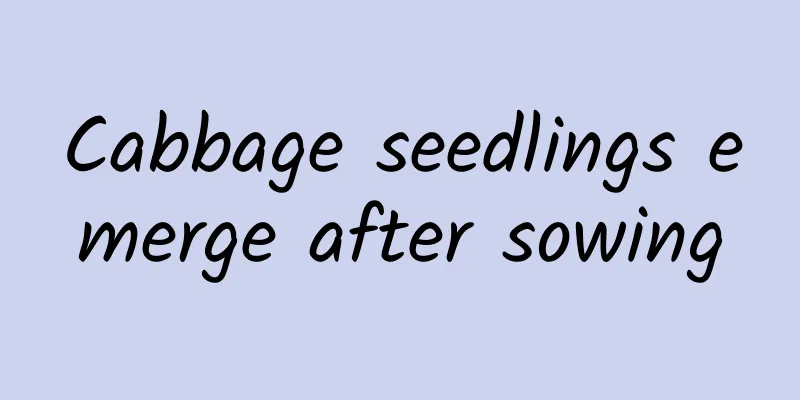How to prune citrus (10 tips for pruning young citrus trees)

|
As the weather gets colder, more and more fruit tree growers have begun the annual winter pruning of their fruit trees. Generally, the time for winter pruning of fruit trees is between fruit drop and bud break, which is from November to February. At this time, the fruit trees are dormant and the pruning effect is best. There are many techniques in fruit tree pruning, which can be summarized in ten words: thinning, cutting, damaging, changing, releasing, knowing, observing, pruning, checking and dealing with. If you can follow these ten words during the fruit tree pruning process, it will be of great help to the growth, shape, and yield of the fruit trees. sparseThinning refers to removing useless parts, such as combing flowers, thinning fruits, thinning branches, thinning buds, etc. Thinning branches can reduce the density of branches in the crown and avoid the formation of "trees on trees" by upright branches on the back. Improve ventilation and light conditions within the tree crown, enhance the photosynthetic capacity of the leaves, promote the healthy growth of the remaining parts, enrich the branches and buds, and promote flower bud differentiation and fruit development. Thinning out strong branches or branches can weaken their power and balance the tree's vigor. By thinning out different types of branches, the ratio of leaves and flower buds can be adjusted, and the amount of flowers and fruits can be adjusted. cutPruning refers to cutting off the annual part, also known as short pruning. Depending on the branching conditions, short pruning is divided into several types, such as light, medium, heavy, and extremely heavy. Since pruning shortens the branch axis, it can increase the density of branches and weaken the light inside the crown. When pruning, the quality and position of the buds can be used to change the angle and direction of the branches to adjust the growth potential of the branches. Pruning can also control the growth of the crown and branches and reduce the crown. hurtWounding refers to making cross-cuts on branches during the dormant period of fruit trees. This can hinder the upward transport of stored nutrients in the roots, so that the buds below the wound can get sufficient nutrition, promoting the germination of buds and the growth of branches. If you make a wound below the buds in summer, it will prevent carbohydrates from being transported downward, improving the quality of the buds above the wound. Ring barking is to prevent nutrients from being transported downward, thereby increasing the fruit setting rate. ChangeChange refers to changing the growth direction of branches. For example, pulling branches and taking branches are all considered "changes". The main purpose is to change the growth direction of branches to weaken apical dominance, improve germination ability, and promote flower bud formation. In addition, pulling branches can also increase the branching angle, improve photosynthetic conditions, and increase the photosynthetic efficiency of leaves. Branch pruning can moderate growth potential, promote nutrient accumulation, increase germination rate, promote the formation of medium and short branches and facilitate the formation of flower buds. It also has the effect of opening the main and side branches of young trees at an angle. putThe branches do not need to be pruned because there are no wounds or stimulation, which can slow down the apical dominance, promote the germination of buds on the lower part of the branches, increase the germination rate, and moderate the branch vigor. The branches stop growing early, which is beneficial to the formation of flower buds and fruiting, and can promote early fruiting in young trees and vigorous trees that should bear fruit but have not yet. Reduction - back-pruning refers to cutting off the perennial part, which can promote the germination of latent buds and the growth of branches and buds behind the cut. It has a strong weakening effect on the mother branches. Retraction plays a dual role of promoting and weakening growth. KnowKnowing means knowing, understanding and mastering the necessary operating procedures and techniques, growth habits, growth conditions and special requirements. Most fruit tree pruning is easy to understand, but some details need to be grasped and controlled by yourself. lookLook means observe. The plant protection teachers at Green Oasis have always said that we should "adapt to local conditions", that is, to formulate pruning plans based on our own conditions. CutPruning should be done according to requirements and symptoms, from top to bottom, inside then outside, big then small. checkChecking means timely inspection, because there will inevitably be omissions and mistakes during operation. At this time, it is necessary to check and correct them in time. DepartmentThe place is to deal with it, prune according to requirements, prune according to the symptoms, from top to bottom, inside first then outside, big first then small. Regarding the treatment of fruit tree pruning, several key points should be achieved, such as protecting the wound, protecting the main trunk, and cleaning the park. |
Recommend
What vegetables are best to grow in February?
In February, vegetables suitable for sowing inclu...
Advantages and disadvantages of Red Diamond Rose
The Red Diamond Rose is also called the Red Emper...
Will the method of growing pumpkins on the balcony bear fruit?
It is good to grow pumpkin on the balcony. It is ...
What does succulent medicinal brocade mean?
What is Yaojin I believe everyone is familiar wit...
Are gold diamonds and red diamonds poisonous? What is the difference?
1. Is it toxic? 1. Golden Diamond: It is poisonou...
Cultivation and reproduction of roses
Roses are very beautiful and are loved by many fl...
How many pounds of winter jujube per mu
Yield of winter jujube per mu Winter jujube is a ...
How to grow Milan flowers to make them more vigorous
Plant habits Of course, we must first know its ch...
Related species of King Protea
Sunlight Sunshine is the most famous hybrid varie...
Can passion fruit be grown in Hunan?
Can passion fruit be grown in Hunan? Passion frui...
How to cultivate bamboo
How to sow bamboo We can buy seeds of Bamboo Shoo...
What does lavender look like? Introduction and characteristics of lavender
1. Morphological characteristics Lavender is a se...
How to propagate osmanthus trees by cuttings, pictures of osmanthus trees
1. Cutting time It is recommended to carry out it...
The value of plane flowers
The ornamental value of the plane flower The orna...
Are pumpkin and squash the same? What's the difference?
Pumpkin and squash are different. Pumpkin is a pl...









